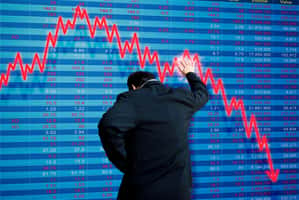Sadly, it appears hopes that the pandemic would end this year, may have been premature.
Numerous companies have been warning during earning season that the supply chain and demand disruption created by the pandemic continues.
And now with the Delta variant causing a 4th global wave, including causing some US states to set new records for cases, Wall Street is getting nervous once more.
Here are the three easy ways prudent long-term investors can not only avoid losing their shirts during these uncertain times but even profit from what is hopefully the final major wave of this pandemic.
Don’t Lose Sleep Over Scary Headlines
The worst-case scenario for the pandemic has always been a new variant that gets around vaccine protection and is both more transmissible and deadlier.
Basically, such a strain could restart the entire hellish pandemic from scratch, and force countries to lockdown again.
But that’s not the most likely scenario.
Thus far the most effective and safest vaccines in human history have continued to provide remarkable protection, even from the scourge that is Delta.

Globally, the 5th wave appears to be peaking, and below the 4th wave’s 900,000 daily cases. That 4th wave was caused by the Alpha variant (first identified in the UK) which was nearly twice as infectious as the original strain.
Delta is nearly more even more infectious, with the CDC estimating a R^O of 5 to 9, compared to 2 to 3 for the original COVID-19 virus.
In other words, each infected person can infect 5 to 9 others, which is why we’ve seen such a massive spike in the US, where just over 50% of the population is fully vaccinated.
However, parts of the country are far more at risk. Before the Delta surge, there were some counties in America with 20% vaccination rates.
For context, the CDC estimates that with a R^O of 5 to 9, it takes 80% to 89% vaccination rates to achieve herd immunity.

In the US we are perhaps approaching a peak, according to the IHME’s model.
IHME estimates that peak infections occurred last week, and by this week might see a peak in reported daily cases. Deaths are a lagging indicator that typically peaks 2 to 3 weeks after cases do.
The US has seen our 7-day rolling average of new cases rise from 10,000 a few weeks ago, to 131,000. Deaths have soared from 200 per day to nearly 700.
However, thanks to 81% of 65+-year-olds being fully vaccinated, the death toll is a fraction of the 4,000 we saw back in early January before vaccines were widely available.
Globally we’re nearly at 5 billion doses administered, and we’re boosting that by nearly 40 million per day, or almost 1.2 billion per month.
No, it’s unlikely that we’ll ever achieve global herd immunity against delta, not even in the US.
However, we are likely getting close to the point at which the virus becomes endemic, and something that is no more dangerous than the seasonal flu.
Moderna (MRNA) has even said its working on a combined flu/COVID vaccine that will offer the best protection ever seen again both flu and the most recent strains of COVID.
Pfizer (PFE) says it can have a new booster vaccine ready against whatever variants may crop up, in just six weeks. Obviously getting those approved and distributed will take far longer, but the point is that mRNA technology is a game-changer in vaccine development.
The Most Important Way To Avoid Disaster When Terrible Things Happen On Wall Street
Believe it or not, we’ve seen 48 record highs in the S&P 500 this year. According to Bloomberg, we’re potentially on track for 78 record highs this year, which would beat 1995’s record of 77.
It’s been almost 200 days since the market closed down 5% from record highs. Even the recent terrible week we suffered, when it felt too many like stocks were crashing resulted in a peak decline of just 4.3%.
This is where proper risk management of your entire portfolio comes in. Proper asset allocation is the first line of defense from any and all terrible things that cause markets to sell off.
Knowing what mix of stocks, bonds, and cash to own so that you can sleep well at night no matter what happens with the headlines, is not always easy and changes over time with your personal situation.
But tables like this can provide a good starting point in determining how much risk you should be taking in the first place.
While hedging is prudent for large institutions and some companies, according to Ritholtz Wealth Management’s CEO Joshua Brown, for most investors hedging isn’t necessary.
Don’t cap your upside with expensive insurance via options (or even more complex hedging strategies) just so you can own more stocks than is right for your personal risk profile.
In part two of this series, I’ll explain what you can do to protect the stock portion of your portfolio during pandemic surges like this, and even how to get rich from surging delta cases.
SPY shares were trading at $443.08 per share on Wednesday afternoon, down $0.96 (-0.22%). Year-to-date, SPY has gained 19.29%, versus a % rise in the benchmark S&P 500 index during the same period.
About the Author: Adam Galas

Adam has spent years as a writer for The Motley Fool, Simply Safe Dividends, Seeking Alpha, and Dividend Sensei. His goal is to help people learn how to harness the power of dividend growth investing. Learn more about Adam’s background, along with links to his most recent articles. More...
More Resources for the Stocks in this Article
| Ticker | POWR Rating | Industry Rank | Rank in Industry |
| SPY | Get Rating | Get Rating | Get Rating |







